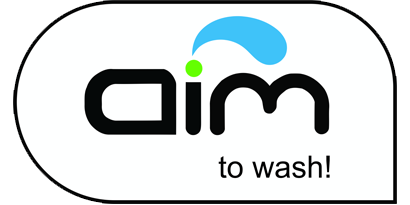7 Step-by-Step Tips on How to Clean Bidet Spray for Maximum Hygiene
Maintaining a clean and hygienic bidet spray can substantially enhance your bathroom routine. Whether you're new to bidet sprays or a seasoned user, knowing how to keep them pristine is essential. In this guide, I'll take you through easy steps to ensure your bidet spray remains in top condition.
1. Gathering Your Cleaning Supplies
Start by assembling the necessary cleaning tools. You'll need a soft cloth, mild soap, a small brush, and white vinegar. These supplies will help you tackle any buildup and ensure a thorough cleaning. Having everything within reach saves time and simplifies the cleaning process. You can easily find these materials at home or at your local store. The mild soap gently breaks down oils and residues without damaging your spray's finish, while the white vinegar serves as a natural disinfectant and deodorizer.
2. Turning Off the Water Supply
Before you begin the cleaning process, make sure to turn off the water supply to avoid any unexpected sprays. This is a crucial step that ensures safety and prevents water wastage. To locate the valve, look for a knob or lever near the toilet that connects to the bidet's hose. The water shutdown is not only practical but also environmentally friendly, reducing potential water loss during the cleaning process.
Once the water supply is turned off, release any remaining pressure in the hose by activating the spray trigger. This additional step helps in preventing any accidental water sprays while handling the bidet head. You'd be surprised how often these small precautions can make the task hassle-free and quick.
3. Detaching the Bidet Spray Head
Carefully unscrew the bidet spray head from the hose. This allows for a comprehensive cleaning of both the interior and exterior components, helping remove any hidden buildup. Some models may require a clockwise twist, while others might need a counterclockwise motion, so it's crucial to handle with care to prevent damage. Removing the head provides access to tiny crevices that are often missed during regular cleaning, ensuring no grime is left unnoticed.
If the spray head seems difficult to detach, a spritz of a penetrating oil such as WD-40 can be used to help loosen any tightly fixed parts. Remember to keep a towel handy to catch any remaining water that may leak from the hose once the head is removed.
4. Soaking the Spray Head
Immerse the spray head in a solution of warm water and vinegar. Letting it sit for at least 15 minutes will help dissolve mineral deposits and disinfect the nozzle effectively. This time allows the acidity in the vinegar to break down any hardened deposits, making them easier to wipe away during the brushing step. As it soaks, the vinegar effectively cuts through layers of buildup that can impede the spray's effectiveness, reviving its spray pattern and efficiency.
5. Brushing Away Stubborn Deposits
Use a small brush to gently scrub away any remaining deposits on the spray head. Pay special attention to tiny crevices where buildup often occurs. A toothbrush is ideal for this task due to its size and ability to reach narrow grooves. This step requires some patience, as mineral deposits can be quite stubborn, but persistence pays off with enhanced water flow and spray precision.
In particularly resilient cases, dipping the brush in a paste made from baking soda and water can provide additional scrubbing power. This natural abrasive helps lift tough grime without scratching the metal, ensuring that your spray head stays in pristine condition.
6. Rinsing and Reattaching the Spray Head
Rinse the spray head under running water to wash away any remaining cleaning solution. Once satisfied, securely reattach it to the hose, ensuring a tight fit to prevent leaks. It’s crucial to make sure the rubber washers are properly aligned during reattachment to ensure a watertight seal.
Give the head a gentle twist to ensure it’s snug and secure. If your model has a quick-connect fitting, ensure that it clicks into place. A properly reattached spray head not only prevents leaks but also helps maintain the right water pressure for effective cleaning.
7. Restoring the Water Supply
Finally, turn the water supply back on and check the spray function. This step ensures everything is working smoothly, and your bidet spray is ready for action. Turn the valve gently to restore water flow and test the spray, adjusting as needed for optimal performance. A clean and properly functioning bidet spray can significantly improve your hygiene routine, making the effort worthwhile.
If you notice any issues with water flow or pressure, it’s worth checking the entire setup again for any missed steps or improperly fixed parts. Regular checks and maintenance can keep such problems at bay, ensuring a consistently satisfying experience.
If you want to avoid cleaning the nozzle altogether, checkout the Bidet Attachment with Nozzle Angle Adjuster. This Bidet attachment has a revolutionary removable nozzle design. It comes with a spare nozzle that you can easily remove and replace. Or even easily wash using the above steps. The choice is yours.

